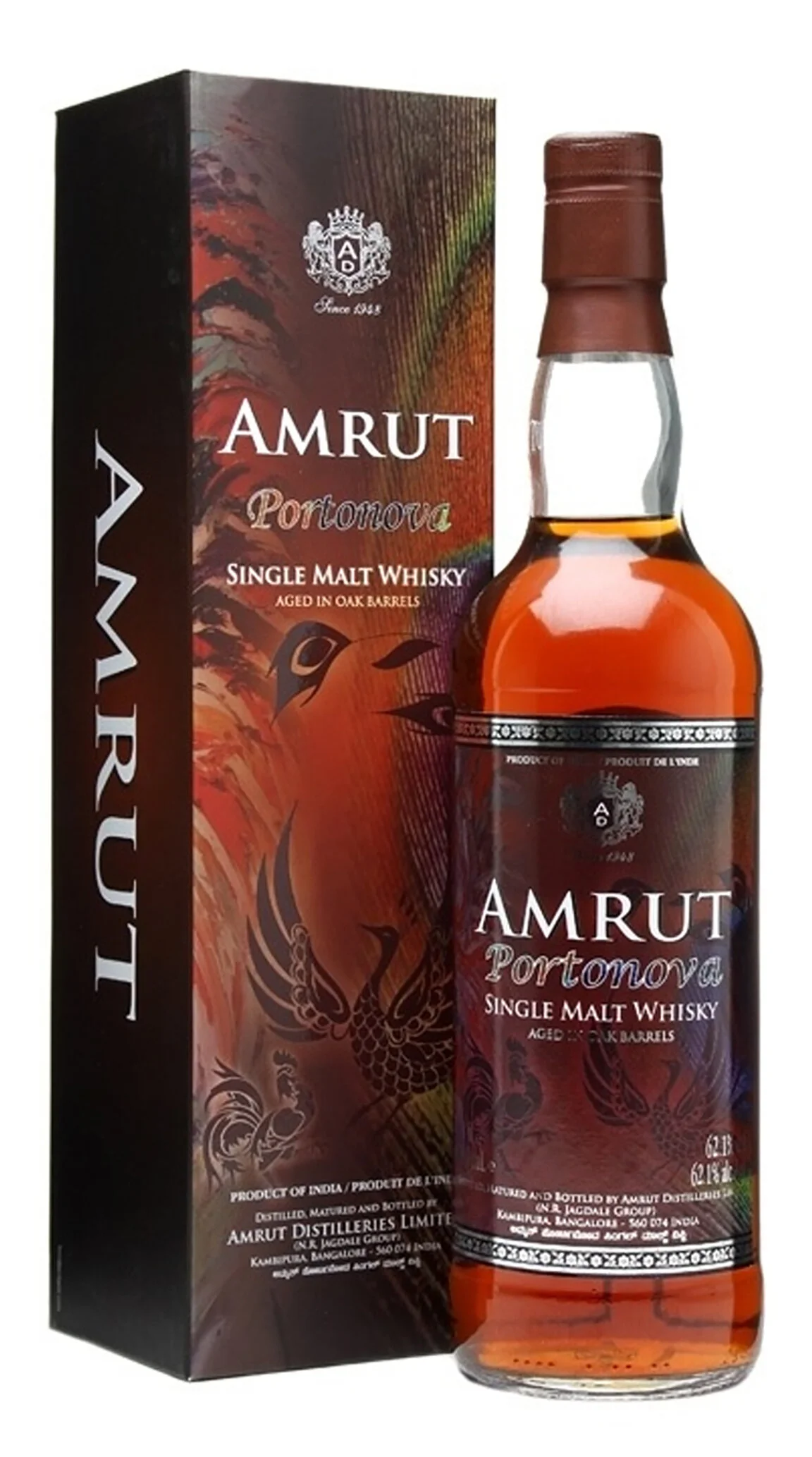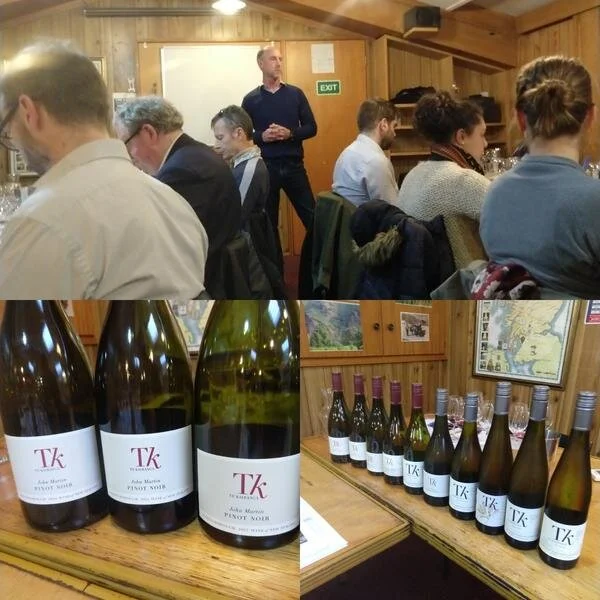A taste tour of Te Kairanga
Having recently tasted our way through a sumptuous lineup of John Kavanagh’s wines at an upstairs tasting at Regional Wines - it was with bated breath that we descended over the hills towards Te Kairanga for a visit to the cellar door and winery.
The region is famously dry - situated in the rain shadow of the Rimutakas, but on this occasion it was showing us just how volatile and changeable the weather in Martinborough can be, as intermittent sunny spells broke into full blown downpours.
Despite the weather, we were greeted by a beaming John at the cellar door and quickly debriefed on TK’s history and the location of its sizeable vineyard holdings that make it the region's largest producer. From Spring Rock in the north to Rua, Martinborough’s southernmost vineyard, the various sites span a variety of micro-climates guaranteeing a diversity of ripeness and styles, giving John the tools he needs for blending his wines. Super-cool Rua with its gruntier tannins and savoury flavours and the hotter Martinborough Terrace with its juicy fruit and ripe phenolics for example.
Then we hit the winery with a quick detour via some Pinot vines on the Home Block, where small berry clusters were just taking shape and a cover crop of helpful weeds and flowers was helping to push the vigour of the vines. Once inside we were met with an impressive array of temperature controlled stainless steel fermenters, the fruits of which were now in barrel developing and growing into the wines they are destined to be - and some of which we would later get to sample from the barrel. But first, a quick taste of some experimental barrel work where John was playing with the themes of lees, barrel fermentation and skin contact - resulting in a textural Sauvignon Blanc, a soft and generous Pinot Gris and a phenolic and acid driven Riesling.
Then we were lead, most willingly, to the Chardonnay barrels and given a sneak peak of the wine from different blocks, including some Mendoza destined for the 2019 John Martin. Barrel fermented in March, this wine was very young, but was exceedingly approachable and with concentration to spare. There was a little smile on John’s face as he spoke on the topic of 2019, and you can tell this will be a vintage to watch.
Next stop Pinot Noir, and once again the fruits of three of four blocks, grouped by clone, were siphoned from the barrel and presented for tasting. It’s staggering how different Pinot from different blocks so closely located can be, and shows just how many balls a winemaker must have in the air at any one time. John knows which blocks and plots will hopefully go into his final wines, but there’s no master recipe to follow - it’s just not that simple. At the end of the day, he’ll be juggling each barrel, seeing what has eventuated and blending based on what he tastes. The Pinot samples finished with a barrel composed of the Abel clone. This was the most approachable, with exquisite ripe red fruits and soft tannins typical of Pinot, and which, unsurprisingly, would be destined for the TK flagship John Martin Pinot.
Tasting from the barrel is without doubt the best way to work up an appetite, but before lunch was served, there was time for a liquid degustation of the current release TK wines.
First course was Riesling courtesy of the 2016 and 2018 Estate followed by the 2018 Skin Contact. The ‘16 was a knock-out showing some sexy evolution in the bottle; lemon and lime sherbet on the nose and exquisite mouth puckering acid on the palate. The 2019 Pinot Gris shows exactly why this grape is so popular in New Zealand. Ripe apples and pears with some texture from the 20% barrel fermented component, this is a serious wine in the clothes of a quaffer. The 2017 Sauvignon Blanc gave us regional typicity courtesy of a lovely herbal line that danced between tart green fruit flavours - the result of its provenance in the cool, southerly Rua vineyard. Then it was a lesson in oak with the 2017 Estate and 2018 John Martin Chardonnay. The latter receives 5% or so more new oak, but this is absorbed by the fruit and the structure of the wine meaning that the oak component in the Estate is actually more noticeable. Lastly a triumvirate of 2017 Pinots gave us a fantastic progression though style; the gentle and savoury Estate Pinot sourced mainly from the Rua vineyard; the gruntier, darker Runholder - a blend of 8 clones from 20 year old vines off the Martinborough Terrace and finally the John Martin - a powerful and feminine wine that shines with Goddess-like qualities.
Palates primed, it was time for Lunch but served with 2014 and 2015 John Martin Chardonnay and Pinot Noir, in what can only be described as a very pleasant surprise. The food was great but the wines were better! 2014 and 2015 were very different vintages - ‘14 warm and generally good, 2015 starting poorly but finishing well and which resulted in low yields - and, as you’d expect, the wines were very different. Interestingly, the two varieties behaved in opposite ways. The 2014 JM Chardonnay had a mineral steely quality whilst the ‘15 was rounder and more generous, whereas the 2014 Pinot was bigger and broader with bolder tannins and darker fruit compared to the linear, lifted elegance of the 2015.
That’s the beauty of wine at the end of the day - the intrigue that works on so many levels and which means it’s never simply a question of variety or vintage. There’s the site, the soil, the vines, and how they’re tended to. There’s the grapes, how and when they’re harvested and whether they’re destemmed or not. There's the decision to inoculate of go with indigenous yeasts, the size of barrels, types of oak, levels of toast and time in new oak. There’s the type of press, time on skins, lees stirring, cap control and so on... and so on.
John (and the team at TK) manage this seemingly chaotic list of decisions with effortless ease - distilling its essence into the bottle where it once again unfolds in layers of complexity and flavour - showing that the human component of wine making is just as important as any of the natural factors.
Here’s to TK - we await the 2019s with much anticipation.



